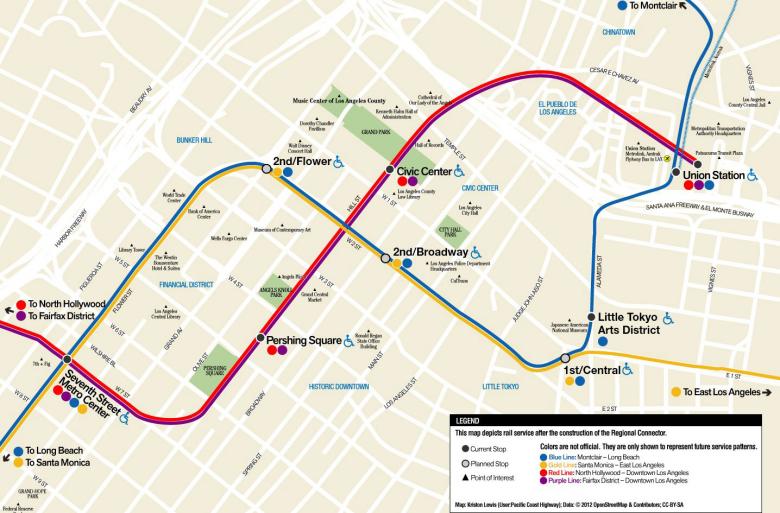
San Francisco Downtown Extension
July 28, 2020
Los Angeles Region Connector
July 28, 2020Construction Package 1(CP1) i consists of the environmental study plus development of the preliminary engineering of the route alternatives for the California high-speed rail line between Palmdale and Burbank. The objective is to select the best possible alternative and obtain environmental approval in order to then continue with the design and construction process.
Depending on the alternative chosen, the route will be around 35-45 miles long (56-72 km). The section has a 600-meter elevation difference and includes the designs of the two stations, in Palmdale and in Burbank.
SENER is the prime contractor, with around 30 local companies also participating in the project as subconsultants.
Characteristics
- Maximum design speed 250 mph (400 km/h).
- Maximum tunnel length over 21 miles (34 km).
- Maximum depths of around 800 m.
The project includes the drilling of 6 deep boreholes (up to 900 m depth) as part of the Geotechnical studies for the base tunnels. Also, a specific study was conducted for the tunnel ventilation system.
This is the first high-speed railway line to be built in the United States. The most notable technical challenges are those relating to the seismic design of the tunnels and structures. In particular, the crossing of active fault lines – both underground and on surface – is a unique feature, as is the design of a tunnel to support groundwater pressures of over 25 bar. The tunnels are being designed with enlarged diameters in order to adapt to potential alignment shifts caused by fault displacements linked to seismic events. Different tunnel construction methods have been considered: tunnel boring machines, sequential methods, and cut-and-cover. One of the station design options requires a significant open excavation down to 60 m deep.




